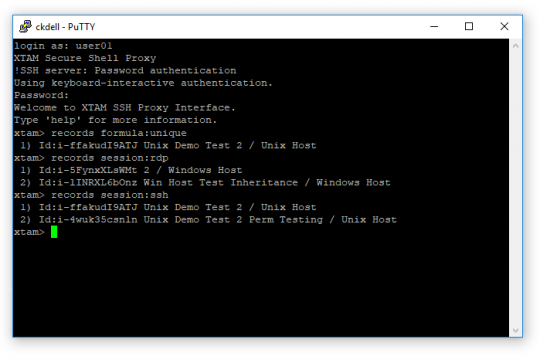

if the socket is open and SSH service responding on the remote part - we are good to go! This time still paramiko.ssh_exception.SSHException is emitted, but the error message would be No authentication methods provided. Proxy Over SSH Tunnel Proxy Remote Requests Locally Proxy Local Requests Remotely Embed proxy.py Blocking Mode Non-blocking Mode Ephemeral Port Loading Plugins Unit testing with proxy.py proxy.TestCase Override Startup Flags With unittest.if the socket is open, but the responding service is not SSH, then Paramiko emits paramiko.ssh_exception.SSHException with a particular message Error reading SSH protocol banner.


if there is nothing listening on a particular socket, then Paramiko emits paramiko.ssh_exception.NoValidConnectionsError.In order to detect if socket is opened I catch different type of exceptions that Paramiko emits: I found it sufficient to setup a timer-driven while loop where Paramiko tries to open a connection without credentials. Prox圜ommand works by forwarding standard in (stdin) and standard out (stdout) from the remote machine through the proxy or bastion hosts. It turned out that with Paramiko it is possible to achieve the goal with most straightforward and probably least elegant code: ProxyJump is the simplified way to use a feature that ssh has had for a long time: Prox圜ommand. Alternatively, I can ssh directly to the work node using a proxy jump, but for this I either require access to ssh command line options or an ssh config file. But in my case Python & Paramiko was all I had. Laptop -> Remote login node -> Work nodes I first ssh onto a remote login node, then ssh from the login node onto a work node. In other words, it takes literally no time to spawn a process in the background, but without checking that tunnel is ready, you will quite likely receive an error, since your next instructions will be executed immediately after.Ĭonsequently, I needed a way to ensure that the SSH service is ready before I try to consume it.īut how do you check if there is a server behind some host:port and that this server is of SSH nature? In Ansible we could leverage wait_for module that can poke a socket and see if OpenSSH banner is there. To use the proxy in git commands using ssh (for example while using GitHub) - assuming you installed Git Bash in C:Program FilesGit- open /. What seemed like a child's play first actually had some fun inside.Ī problem were hidden right between the moment you spawned ssh process in the background and the next moment you tried to use this tunnel. It might be for example a 圜ommand instance. Called when an SSHClient receives a server key for a server that isn’t in either the system or local HostKeys object. Today I faced a task which required first to establish an SSH tunnel in a background process and later use this tunnel for SSH connection. Proxy where all SSH traffic will be passed through. Policy for logging a Python-style warning for an unknown host key, but accepting it. o ExitOnForwardFailure=yes makes sure the ssh command will fail if the tunnel cannot be established, otherwise it will not exit.Paramiko python Waiting for SSH service to be ready with Paramiko # KNOWN_HOSTS='/path/to/specific_known_host_to_conflicts', What im trying to succeed here is create one SSH tunnel, so that i can connect from a python script running on my pc, to a remote MySQL database running on. I use this in a project that requires a reverse tunnel to be established from subprocess import call, STDOUT So you can start background process of ssh (with -Nf) and then check (or terminate) it with a another ssh call. Refer to the description of ControlPath and ControlMaster in ssh_config(5) Specifies the location of a control socket for connection sharing, or the string “none” to disableĬonnection sharing. Refer to theĭescription of ControlMaster in ssh_config(5) for details. Into “master” mode with confirmation required before slave connections are accepted. There's this little-mentioned feature in openssh client that allows us to control a ssh process through a unix socket, quoting man ssh: -M Places the ssh client into “master” mode for connection sharing. Even though this does not use paramiko, I believe it's a very clean solution to implement (similar to answer but without managing the thread in python).


 0 kommentar(er)
0 kommentar(er)
